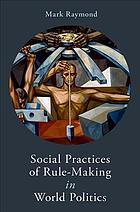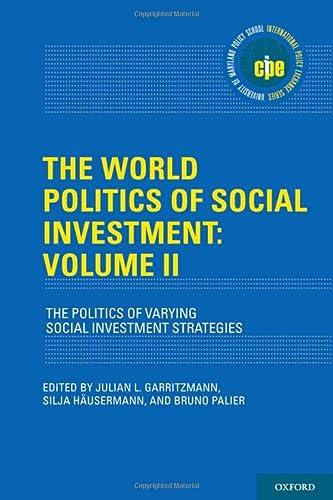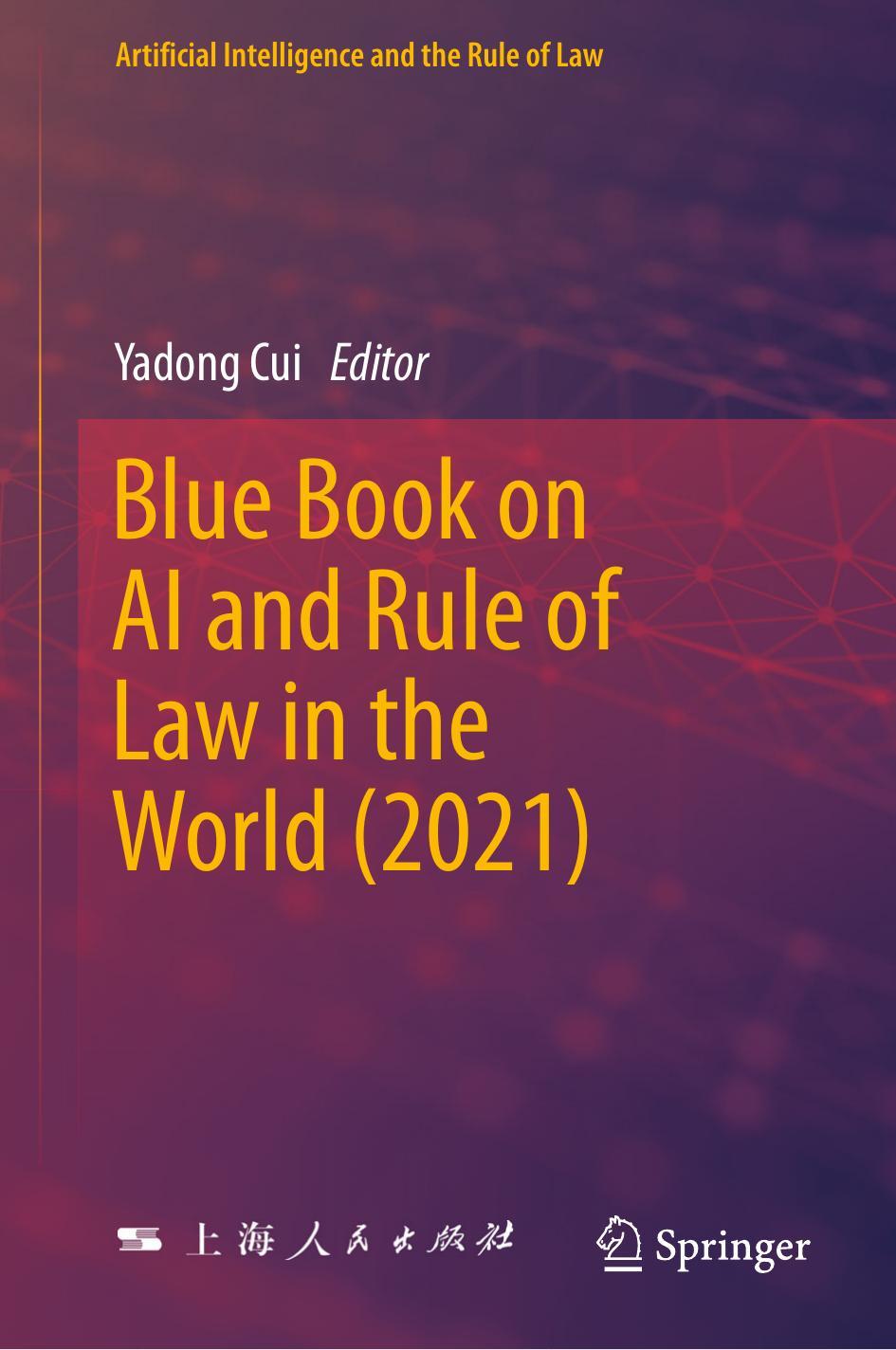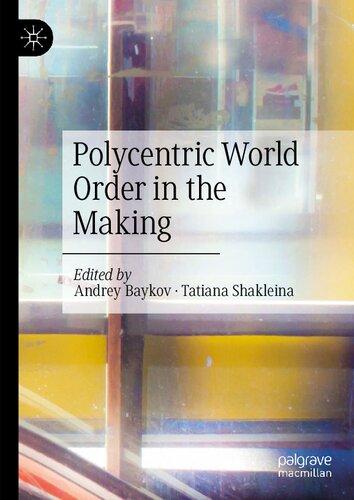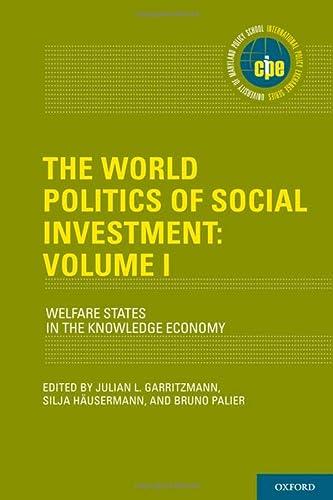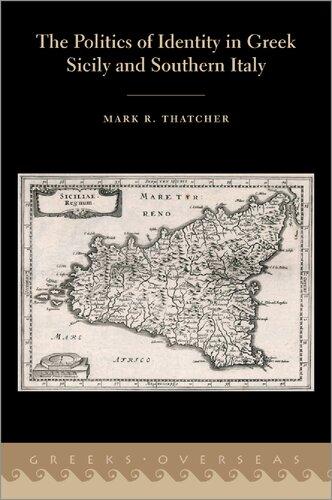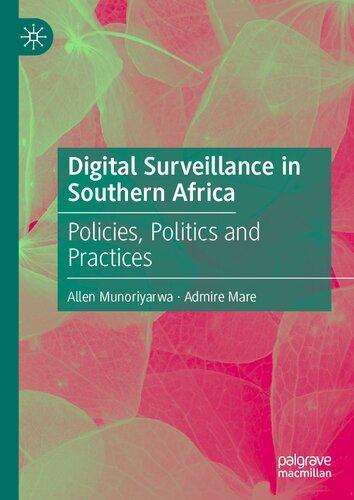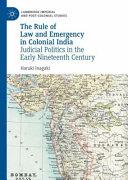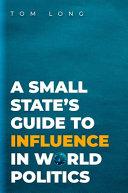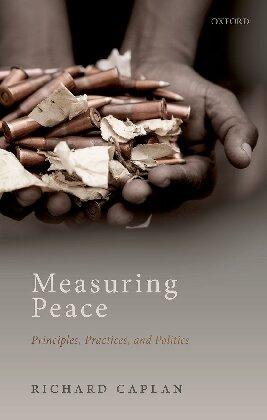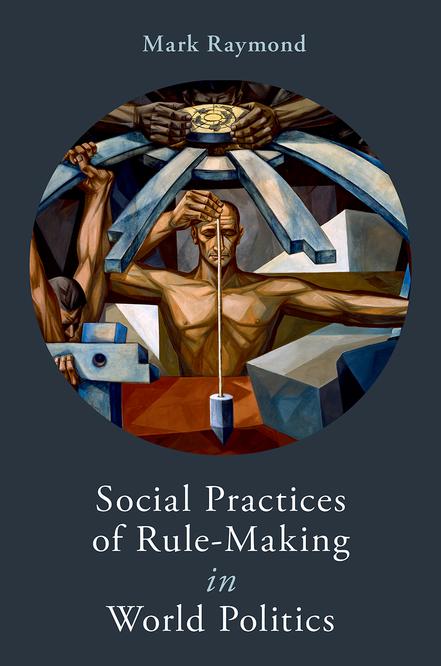Social Practices of Rule-Making in World Politics
MARK RAYMOND
Oxford University Press is a department of the University of Oxford. It furthers the University’s objective of excellence in research, scholarship, and education by publishing worldwide. Oxford is a registered trade mark of Oxford University Press in the UK and certain other countries.
Published in the United States of America by Oxford University Press 198 Madison Avenue, New York, NY 10016, United States of America.
© Oxford University Press 2019
All rights reserved. No part of this publication may be reproduced, stored in a retrieval system, or transmitted, in any form or by any means, without the prior permission in writing of Oxford University Press, or as expressly permitted by law, by license, or under terms agreed with the appropriate reproduction rights organization. Inquiries concerning reproduction outside the scope of the above should be sent to the Rights Department, Oxford University Press, at the address above.
You must not circulate this work in any other form and you must impose this same condition on any acquirer.
CIP data is on file at the Library of Congress
ISBN 978–0–19–091311–3
9 8 7 6 5 4 3 2 1
Printed by Sheridan Books, Inc., United States of America
CONTENTS
Acknowledgments vii
INTRODUCTION 1
CHAPTER 1. Social Practices of Rule-Making 8
CHAPTER 2. The Social Construction of Great Power Management, 1815–1822 44
CHAPTER 3. Banning War: Social Practices of Rule-Making in the Interwar Period 83
CHAPTER 4. Social Practices of Rule-Making and the Global War on Terror 142
CHAPTER 5. Rules for State Conduct in the Cyber Domain 203
CONCLUSION 236
References 251 Index 263
ACKNOWLEDGMENTS
This book would not have been possible without the support, encouragement, and assistance of a great many people. I am extremely grateful for the opportunity to say a few words of thanks to them here.
First, I want to thank the members of my doctoral committee at the University of Toronto, where this project began. David Welch, Emanuel Adler, and Steven Bernstein were kind enough to read and comment on the draft chapters in their earliest forms and to help them take shape. Matthew Hoffmann served as the internal reader and played a valuable role in improving the final dissertation. Richard Price went well beyond his role as the external examiner and provided extensive constructive comments. In addition to his role as my doctoral adviser, David Welch has provided invaluable advice, constant encouragement, and lasting friendship.
Next, I owe my thanks to the reviewers for Oxford University Press, and especially to Nick Onuf, who was kind enough to reach out and offer his assistance with revising the manuscript. As a result of the reviewers’ careful comments, the book is substantially improved. That improvement was ultimately made possible by my editor, Angela Chnapko. I would like to thank her for choosing such constructive reviewers for the manuscript, and also for her belief in the project and her patience as the revisions unfolded.
I would like to thank the Department of International and Area Studies at the University of Oklahoma for its support as I revised the book manuscript. Suzette Grillot and Mitchell Smith helped me secure essential assistance in the form of course releases and summer research fellowships that facilitated the addition of the fourth case study, as well as other revisions to the manuscript. Keith Gaddie and the staff of Headington College at the University of Oklahoma provided a congenial atmosphere in which to finalize the revisions, for which I am very grateful.
During the process of writing the book I have benefited from the assistance of many of my friends and colleagues, some of whom have read part or all of the manuscript at various points in its development, and all of whom have provided valuable advice and encouragement. The following list is in alphabetical order: Samantha Bradshaw, Aaron Brantly, Benjamin de Carvalho, Derrick Cogburn, Ron Deibert, Laura DeNardis, Amy Eckert, Martha Finnemore, Bill Flanik, Harry Gould, Tim Gravelle, Fen Osler Hampson, Erin Hannah, Jarrod Hayes, Eric Heinze, Wendy Hicks, Aaron Hoffman, Terilyn Johnston Huntington, Jill Irvine, Patrick Thaddeus Jackson, Patrick James, Ron Krebs, Alanna Krolikowski, Charlotte Ku, Halvard Leira, Daniel Levine, Joseph MacKay, James Manicom, David McCourt, Chris McIntosh, Lilly Muller, Michelle Murray, Iver Neumann, Daniel Nexon, Joseph S. Nye, John Owen, Roland Paris, Darren Purcell, Maria Rost Rublee, Niels Nagelhus Schia, Rebecca Sanders, Ole Jacob Sending, Jason Sharman, Erika Simpson, Charmaine Stanley, Brent Steele, Michael Struett, Jelena Subotic, and Jessica West. I am deeply grateful to all of you for your time, and even more for your friendship.
I would also like to thank my graduate students at the University of Oklahoma. While I have immensely enjoyed working with all of you, particular thanks are due to Stefanie Neumeier for reading the entirety of the revised manuscript, and to Nela Mrchkovska and Josie Smith for their assistance with the launch of the Cyber Governance and Policy Center.
It should go without saying that I apologize to anyone inadvertently omitted from this list, and that any remaining errors in the manuscript are my own.
Finally, I would like to thank my family. My parents, Alan and Elva Raymond, have provided unconditional love and support, without which I would never have had the chance to write this book. I also want to thank them for encouraging my interest in the wider world. I want to thank my in-laws, Ray and Irene Raatzs, for welcoming me into their family. Most of all, I want to thank my wife Kate for believing in me, for talking through the argument with me as it evolved, for reading draft chapters and offering her wisdom, and for her love and friendship. Thank you for sharing this journey with me.
Introduction
It is commonplace to assert that we live in a rule-based global order, though assessments of the vitality and future trajectory of that order vary widely. This book takes the existence of such an order as its starting point, and seeks to contribute greater understanding of its nature and dynamics. Perhaps the most crucial question about this order is how its substantive contents (i.e., the rules) are determined and changed. That is the fundamental question that this book seeks to answer.
The constructivist literature identifies a number of mechanisms and processes—such as norm creation, social learning, strategic social construction, socialization, persuasion, contestation, and others—by which actors accomplish both the continuous reproduction and transformation of the rules, institutions, and regimes that constitute their worlds. However, it is less clear how these mechanisms relate to each other. Are they synonyms? Alternative explanations? Is it a matter of scope conditions, in which some mechanisms predominate in some circumstances while different ones are at work in others? In order to maximize the comparability of existing and future constructivist empirical research, and to avoid conceptual duplication, it is important that these questions be resolved. However, this proliferation of mechanisms also raises two deeper questions for which the field thus far lacks clear answers: (1) how do actors know how to engage in all the various processes available to them for changing or reproducing norms and rules, and (2) how do they know when to utilize one mechanism rather than another?
The answer, I argue, is that participants in world politics are also simultaneously engaged in an ongoing social practice of rule-making, interpretation, and application. This social practice of rule-making is itself governed by procedural rules. These rules about rule-making are analogues to what the legal philosopher H. L. A. Hart referred to as secondary rules (Hart 1994). They provide an instruction manual that enables actors to engage in contextually appropriate modalities for making and interpreting rules, and for applying rules to novel cases.
The procedural rules that constitute practices of rule-making in specific social settings do more than help actors understand how to engage in various processes for making and interpreting rules. They also play a vital role in determining the success or failure of individual proposals about rules, because actors will typically evaluate others’ proposals according to the requirements of the relevant procedural rules as they understand them. Thus, proposals advanced in a manner consistent with relevant procedural rules are (all things equal) more likely to be accepted than those advanced in a manner inconsistent with these rules. By identifying a crucial overlooked social practice in the international system, the book contributes to describing the international system and its operation. It also contributes to explaining the form, process, and timing of changes in rules and institutions at the global level, as well as to explaining the success or failure of particular attempts to change those rules and institutions. In doing so, it makes four significant contributions to International Relations (IR) theory. First, it shows how actors know how and when to use various means to change rules and institutions, as well as how they know how to respond to such efforts by other actors. Second, the book shows how attention to procedural rules enhances the ability of practice-turn constructivist approaches to specify the content and account for the existence of particular practices. It also extends the range of applications of practice-turn constructivism to rule-making itself—a highly consequential practice endemic to virtually all social settings, but one that has largely escaped study in the context of the international system. Third, the book shows that this practice of making, interpreting, and applying rules is vital to understanding the causal mechanisms and processes associated with both the reproduction and transformation of social institutions. Choice between substantively similar proposals turned on procedural grounds. Practices of rule-making led to unanticipated outcomes. Actors continued to utilize accepted practices of rulemaking even when they proved inconvenient or counterproductive. They commonly portrayed these practices as closely connected to their understandings of basic values and of the proper goals and purposes of political community. The cases also show that social practices of rule-making are vital to explaining several outcomes across the cases that are at odds with the expectations of prevailing theories. Finally, the book connects the literature on global governance to the literature on the international system. It shows that practices of global governance are centrally concerned with making, interpreting, and applying rules, and argues for placing global governance at the heart of the study of the international system and its dynamics. In doing so, it also builds on the emerging literature on hierarchy in the international system by foregrounding the authoritative nature of legitimate rules and the ways that rules can authorize actors to make certain decisions—including decisions about making, interpreting, and applying rules. The presence of these kinds of authoritative rules suggests that despite
the important advances contained in recent work in authority and hierarchy in the international system, increased attention to procedural rules for rule-making and the social practices of rule-making they constitute and govern offers important benefits.
Plan of the Book
The first chapter contains the conceptual and theoretical arguments, while the final four chapters present cases that demonstrate the existence and operation of a social practice of rule-making, and show that the procedural rules constituting and regulating this practice simultaneously enable and constrain actors both in making and evaluating attempts to change rules and institutions in the international system. As I have already presented the theoretical argument in brief, I will not elaborate further here on chapter 1.
I examine four cases: (1) the social construction of great power management in the aftermath of the Napoleonic Wars; (2) the creation of a rule against the use of force, except in cases of self-defense and collective security, as enshrined first in the Kellogg-Briand Pact; (3) contestation of the international system by al-Qaeda in the period immediately following the 9/11 attacks; and (4) efforts to establish norms for state conduct in the cyber domain conducted in the First Committee of the United Nations General Assembly.
These cases each consist of multiple attempts to alter social rules and institutions—some of which failed and some of which succeeded. Overall, the cases support my argument’s core claims: proposals for change in rules were typically presented and evaluated according to relevant secondary rules; properly presented proposals were more likely to be accepted than improperly presented ones; deviations from accepted practices of rule-making and rule interpretation were consistently met with an expected range of discursive responses including denial, justification, and criticism; and, especially in the al-Qaeda case, disagreement over secondary rules resulted in acrimony and an inability to conduct a joint process of rule-making.
The deliberate selection of both difficult and important cases enhances confidence in these findings. All the cases examined touch centrally on issues of international security. The expectation of mainstream IR theories is that such cases are least amenable to the influence of ideational factors. In the realm of “high politics,” at least in cases where the strategic context is seen as threatening, considerations of material power and interest are generally believed to predominate. Contra these expectations, the evidence clearly shows rule-guided behavior as well as concern on the part of key actors with the standards of appropriateness for conduct in rule-making and rule interpretation established by
relevant procedural rules. Actors knowingly engaged in practices of rule-making, and this social practice clearly shaped the ultimate outcome in each of the cases examined.
The cases stand out for their importance even among the universe of possible cases involving contestation of rules and institutions related to international security. The construction of practices of great power management marked a critical step toward the modern system of active, multilateral collaboration in the day-to-day governance of the international system; the world’s oldest intergovernmental organization (the Central Commission for the Navigation of the Rhine, or CCNR) was established by the Final Act of the Congress of Vienna. Likewise, the Kellogg-Briand Pact’s rule against the use of force except in cases of self-defense or collective security was preserved in the Charter of the United Nations, and marked a clear diminution of the sovereign prerogatives of modern states. The 9/11 attacks are part of a sustained challenge to the basic practices of the international system. Al-Qaeda and its supporters prompted controversial responses by the United States—some of which constituted further proposals to change key international rules and institutions. In addition, al-Qaeda’s actions directly inspired the Islamic State, which has taken up a similar cause. The contentious, fractured dialogue between Islamic fundamentalists and officials embedded in the international system highlights the risk of a possible breakdown in the legitimacy of contemporary international practices of rule-making and interpretation. Finally, agreement among states on making, interpreting, and applying rules of international law appears to have facilitated the emergence of agreement on basic norms for state conduct in the cyber domain despite the persistence of contention and conflict over a variety of cyber issues. If practices of rule-making, interpretation, and application shape the outcome of such crucial cases in International Relations, it seems reasonable to conclude that the practice is operative in less contentious cases, with the important proviso that this may change if the legitimacy of current practices deteriorates.
Chapter 2 examines the social construction of the Concert system in the aftermath of the Napoleonic Wars. Statesmen employed secondary rules constituting a clear practice for making and interpreting social rules in order to moderate the conflict potential of the international system. They accomplished this task by establishing new practices of active collective conflict management that accorded special rights and responsibilities to great powers. Such institutional devices survived the formal Concert system, and continue to inform state practice. While other accounts have noted the institutional innovations of 1815, none have identified the role of a rule-governed practice of rule-making in accounting for the outcome. The case also clearly demonstrates the potential gains from relatively greater social competence in practices of rule-making and rule interpretation. Metternich and, to a lesser extent, Castlereagh proved able to
leverage social competence both to achieve their own goals and to defeat undesirable proposals made by other actors. While historians and biographers have highlighted the key roles of both men, and while political scientists have noted the importance of skill as a power resource, the book advances knowledge by identifying a particular skill of critical importance—skill at performing social practices of rule-making and interpretation.
Chapter 3 revisits the standard interpretation of the interwar period as a momentous failure of statecraft resulting from liberal or “utopian” policies. The Kellogg-Briand Pact fundamentally altered the international system by rendering war illegal except in cases of self-defense and collective security; this new rule survived the Second World War and is enshrined in clearly recognizable form in the Charter of the United Nations. Notably, this outcome was not the initial intention of either of the two men whose names the agreement bears, nor of their governments. Instead, it is attributable in large part to tactical efforts by both the French and American governments to force the other to abandon the issue or accept a disadvantageous bargain by manipulating and tactically employing procedural rules. Thus, the case shows that these rules do not simply constrain actor behavior; in at least some circumstances, they can play key roles in generating initially unintended outcomes. Further, the treaty prompted consistent responses from a broad array of states. Not only did the treaty gain nearuniversal acceptance, states routinely identified the same political concerns with the text and, most notable, reached similar evaluative conclusions on issues of concern by employing similar procedures and lines of reasoning. The treaty also prompted socially competent replies from two relative newcomers to the international system (Japan and the Soviet Union). This pattern suggests broad familiarity with, and general acceptance of, applicable procedural rules.
Chapter 4 examines the attempt by al-Qaeda to refashion the international system via a coordinated strategy of terror attacks and public messages, and the corresponding response of the American government. The case covers the period from al-Qaeda’s 1996 “Declaration of Jihad” to the American intervention in Iraq in March 2003. This delimitation of the case allows the evaluation of several discrete proposals for alterations in the rules and institutions governing the international system. It also examines the case prior to the effect of the Iraq War, which shifted attention toward the legitimacy of the American intervention. My central finding in this case is that the practice of rule-making, interpretation, and application was substantially inhibited by a “Tower of Babel” effect; each side relied almost exclusively on its own culturally prescribed secondary rules, rendering meaningful engagement exceedingly difficult. This highlights the robustness of the generic practice of rule-making, which exists across cultural divides and which is highly resistant to compromise. The case is notable for the unusual emotional valence surrounding the participants’ positions. Both
sides connected procedural legitimacy to notions of “the good life,” and thus to fundamental questions about justice that have been largely overlooked in IR scholarship (Welch 2014). These findings shed light on efforts by the Islamic State to articulate a critique of the international system, and have implications for efforts to undermine its attractiveness as a political project. They also illustrate the danger in an increasingly culturally heterogeneous international system if greater consensus on procedural rules for rule-making cannot be forged.
Finally, chapter 5 investigates efforts to create norms for state conduct in the use of information and communications technologies (ICTs), focusing on efforts in the First Committee of the United Nations General Assembly. While the First Committee has been engaged in work on these questions since 1998, a 2013 report by the Group of Governmental Experts on Developments in the Field of Information and Telecommunications in the Context of International Security (GGE) contained an important advance in state thinking about these issues. It asserted that “international law, and in particular the Charter of the United Nations, is applicable and is essential to maintaining peace and stability and promoting an open, secure, peaceful and accessible ICT environment.” Beyond the UN Charter, it specifically enumerated state sovereignty, human rights, and the law of state responsibility as among the applicable bodies of international law governing state use of ICTs (UNGA 2013a, 8).
Remarkably, this rapid progress on norms for state conduct in the cyber domain came amid two trends not conducive to norm development: (1) a precipitous decline in diplomatic relations between Russia and most advanced industrial democracies; and (2) increased contention over Internet governance and cybersecurity issues at the global level. Despite these obstacles, state representatives to the GGE engaged in a rule- governed social practice of applying old rules to new cases. They drew on existing rules of diplomacy and international law to advance their positions on the most desirable and appropriate rules to govern state use of ICTs. These rules simultaneously empowered and constrained state representatives in advancing their positions and in evaluating proposals made by their counterparts. The rejection of a Russian proposal for a new international treaty in favor of an alternate approach based on applying existing rules of international law demonstrates the robustness of existing rule-making practices in the international system. This is especially true given that this position was endorsed by a diverse group of countries with different values, interests, and capabilities in the cyber domain—and that it occurred during a period in which cyber issues have become increasingly contentious. This agreement represents only a beginning in this crucial frontier for the rule-based global order, and it is likely that these rules will still be violated quite frequently by some actors. However, the public declaration that international law is applicable in
the cyber domain places processes of rule-making and interpretation on a much more stable foundation by establishing agreement on the applicable secondary rules. This enables violations to be identified and criticized more easily and effectively.
The book concludes by consolidating its contributions to IR theory. It makes the case that the book improves upon existing specifications of the international system by identifying an overlooked class of social practices pertaining to rule-making, interpretation, and application. It shows that the book provides insight about ways to deal with the problem of comparing and perhaps consolidating the large number of mechanisms identified in the constructivist literature for creating and altering intersubjective knowledge such as rules. It argues that attention to procedural rules about rule-making and the social practices they constitute and govern can improve upon existing constructivist tools for explaining change in the rules and institutions that structure international systems, both in explaining the form, process, and timing of change, and also in explaining the success or failure of specific attempts. And, finally, it links social practices of rule-making with processes and institutions of global governance. In doing so, it demonstrates the importance of global governance to the study of the international system; and by foregrounding the importance of authoritative rules in the international system, it suggests the potential that additional focus on secondary rules and social practices of rule-making can expand upon existing understandings of authority in the international system, and thereby enhance the emerging literature on hierarchy and authority in International Relations.
Social Practices of Rule-Making
The everyday conduct of International Relations involves a great deal of ongoing effort to make, interpret, and apply social rules. This effort can be collectively understood as a social practice. Like all social practices, this practice of making, interpreting, and applying rules is itself governed by a set of procedural rules. These procedural rules have changed over time and, like all rules, continue to exist only as they are instantiated in practice by actors. These rules both empower and constrain actors in making, interpreting, and applying social rules. And, finally, these procedural rules differentially empower and constrain different actors.
This practice of rule-making, interpretation, and application is vital to understanding the causal mechanisms and processes associated with both the reproduction and transformation of institutions, and thus to explaining the form and timing of an important subset of change in the international system. The procedural rules constituting this practice provide an instruction manual that enables authorized actors to engage in contextually appropriate ways of making and interpreting rules, and for applying rules to particular cases. Accordingly, they play a vital role in determining the success or failure of specific proposals for change in the rules of the game in the international system, because actors typically evaluate such proposals according to their understanding of the relevant procedural rules. Proposals for social change advanced in a manner consistent with relevant procedural rules are (all things equal) more likely to be accepted than those advanced in a manner inconsistent with these rules.
If I am correct, we should see particular kinds of evidence. First, actors should present and evaluate proposed rules or interpretations of rules in a manner consistent with relevant procedural rules. That is, they should engage in both critical and justificatory behavior that makes reference to such procedural rules. Second, to the extent that procedural rules are causally effective, more procedurally competent proposals and interpretations should be more likely to generate agreement than less procedurally competent proposals and interpretations.
This argument does not require that actors engage in this practice perfectly sincerely. Actors can comply with rules for a variety of reasons, and often do so with mixed motives. What matters is that the rules shape behavior—simultaneously empowering and constraining actors as they pursue both their values and their interests.
In this chapter, I briefly deal with definitions of some key concepts in my argument, review relevant constructivist literature and identify the central research questions that motivate the book, and develop an account of this social practice of rule-making and its significance for IR theory. The chapter concludes with a brief overview of the methods and evidence employed in the four empirical case studies that comprise the remainder of the book.
Rules
The starting point of this book is that rules are fundamental to human social life, and that this is no less true of the international system than it is of domestic politics or any other kind of social context. As Nicholas Onuf has written, “many, perhaps most, deeds are responses to rules” (1994, 18). Accordingly, the book belongs in the diverse constructivist body of IR scholarship. The breadth of this community complicates efforts to make concise theoretical statements, and resolving debates within constructivism is beyond the scope of my purpose in this book. Broadly, I situate my work at the intersection of rule-oriented and practice-turn constructivisms. I treat rules as both formal and informal, and as simultaneously regulative and constitutive. Further, I argue that social practices are constituted and governed by procedural rules. However, actors live in social settings structured by multiple rule sets and in which actors have overlapping but not identical understandings about the content of these rules and how to apply them in particular cases. Accordingly, societies have additional practices of rule-making, interpretation, and application governed by rules about rules. These interpretive rules and practices are context-dependent, varying across cultures and across time. I begin by briefly elaborating the understandings of rules and other relevant social theoretic concepts that inform my efforts to demonstrate how procedural rules shape international outcomes.
Put simply, “rules are statements that tell people what we should do.” In so doing, they provide “a standard for people’s conduct in situations that we can identify as being alike and can expect to encounter” (Onuf 2013, 4). They “describe some class of actions and indicate whether these actions constitute warranted conduct on the part of those to whom these rules are addressed” (Onuf 1994, 10). In this respect, then, rules are very similar to norms—typically defined in constructivist research as a “standard of appropriate behavior for
actors with a given identity” (Finnemore and Sikkink 1998, 891). Indeed, Onuf argues that the components of Stephen Krasner’s classic definition of an international regime—“principles, norms, rules and decision-making procedures” (Krasner 1982, 185)—“are all categories of rules” (Onuf 2013, 14). Throughout the book, I adopt this expansive understanding of norms as a subset of rules.
I also follow Onuf in maintaining that “all rules are always constitutive and regulative at the same time.” Onuf explains that “by definition, rules regulate the conduct of agents because rules are normative—they tell agents what they should do.” They are necessarily also constitutive because “the regulation of conduct constitutes the world within which such conduct takes place, whether agents intend this consequence or not” (Onuf 2013, 12). However, this dual character of rules is tempered by the reality that “some degree of functional specialization among rules is not only possible but likely.” Insofar as this is the case, “a few rules are disproportionately weighty in constitutive effect” (Onuf 1994, 7).
Rules leave particular identifiable traces in the world. The most obvious are written rules of various kinds, including formal legal rules and more informal texts. However, whether or not rules are recorded in written form, “dealing with rules prompts people to talk about them, and involves them in the many arguments to which rules relate.” Further, “by virtue of such talk, rules do exist—not just as inferences, but as things, however protean or transitory” (Onuf 1994, 6).
Since I take the position that rules are elementary to social life, it is necessary to be somewhat more specific about the scope of the book. I am particularly concerned with rules in two ways. First, I am concerned with the subset of procedural rules that pertains to procedures for making, interpreting, and applying rules—that is, with rules for rule-making. Such rules constitute and regulate what I argue are contextually specific social practices for rule-making. Though I believe such practices to be endemic to social life at all levels of analysis, the empirical scope of this book is what International Relations scholars traditionally refer to as the international system, which I understand expansively to include what scholars of the English School refer to as international society.1 Second, I am concerned with the way these procedural rules and their associated practices of rule-making shape the ways that actors present and evaluate proposals for changes in other rules, and thus help explain the success or
1 Systemic theorizing has a long history in International Relations, and crosses virtually every paradigmatic divide (see, among many others: Bull 2002; Waltz 1979; Gilpin 1981; Keohane 1984; Wendt 1999; Holsti 2004). That said, I do not claim that this system is hermetically sealed, or that international rules are completely divorced from the domestic level (Ruggie 1982; Putnam 1988; Milner 1991).
failure of particular attempts to change them. In particular, rule-governed social practices of rule-making offer the potential to build upon existing approaches to explaining the form, process, and timing of changes in the rules of the game for international relations.
Rules are closely related to several other important concepts in IR theory. Here, I deal briefly with the relationship of rules to language, institutions, identities, and practices. Language and speech are central to rule-oriented constructivism. Indeed, such variants of constructivism start from the premises that “language is action” and that “speech acts (promising, declaring, apologizing, etc.) are both plentiful and central to social life” (Duffy and Frederking 2009, 328). Onuf argues that “rules always and necessarily derive from performative speech—utterances through which people accomplish social ends directly.” Three forms of speech acts correspond to three types of rules: assertive speech acts to instruction rules; directive speech acts to directive rules; and commissive speech acts to commitment rules (Onuf 1994, 10–11). Instruction rules “inform agents about the world—the way things are, the way it works—and inform them what consequences are likely to follow if they disregard this information.” In contrast, “directive speech acts are recognizable as imperatives.” Finally, “commissive speech acts involve promises” and “give form to rules when hearers, as speakers, respond with promises of their own.” Such rules create “the rights and duties that agents know they possess with respect to other agents” (Onuf 2013, 11–12).
Procedural rules for rule-making and interpretation, the primary focus of this book, can take any of these three forms. Sets of procedural rules will almost certainly include rules of all three types. For example, instruction rules might establish the existence of a category of actor, such as states or international organizations, and specify criteria for identifying members of that class. Directive rules and commitment rules addressed to particular kinds of actors enumerate the various rights and responsibilities of different agents in making, interpreting, and applying rules. Additional instruction rules may provide relevant details about appropriate modalities for exercising and fulfilling these rights and responsibilities. Accordingly, this typology of rules is for the most part orthogonal to the argument I am making. As a result, I distinguish among instruction, directive, and commitment rules only where my argument specifically requires it.2
Christian Reus- Smit defines institutions as “stable sets of norms, rules, and principles that serve two functions in shaping social relations: they constitute actors as knowledgeable social agents, and they regulate behavior” (1999, 12–13). Onuf likewise regards rules as integral components of institutions, but
2 On the relationship between these three types of rules and H. L. A. Hart’s notion of secondary rules, see Onuf (1994, 14).
he adopts a slightly broader definition that treats institutions as “recognizable patterns of rules and related practices” (Onuf 2013, 5). This broader definition takes into account the existence of divergence between nominal rules and actual practices, as well as the difficulty posed by the inevitable development of informal, unwritten rules that “spring up in the margins of any rule set, no matter how assiduously the appropriate agents promulgate new legal rules” (Onuf 1994, 13). Determining whether an apparent inconsistency is the result of a difference between nominal rules and actual practices, or is instead the result of an additional (perhaps unwritten) rule, poses a difficult problem not only for the analyst but also for agents themselves. This is especially true when agents have differing understandings of the answer to this question or even the appropriate way to go about answering it. Ultimately, however, this problem is an empirical one that needs to be sorted out with reference to the actual rules that agents believe to be operative in a particular context.
Further, Onuf acknowledges that rules and practices “are almost impossible to separate in practice, because every time agents respond to rules, whether by making choices or observing the choices that other agents make, they have an effect on those rules and their place in families of rules” (Onuf 2013, 13). This acknowledgment raises two key points. The first is that rules (and therefore institutions) are continually in flux, rather than fixed objects that change periodically in response to exogenous shocks that upend stable equilibria.3 Instead, “institutions are continuously subject to unintended development and periodically subjected to alteration by design” (Onuf 2013, 169).4 The second is that institutions are typically understood as containing sets of rules.5 Onuf argues that while “it is possible to think of a single rule as an institution,” in practice “we never find a single rule standing by itself” (Onuf 2013, 17). Further, the rule sets that comprise individual institutions or regimes are linked by additional rules. Indeed, Onuf argues that “international regimes are hard to see because the rules connecting the institutions that make them up tend to be informal” and taken for granted by agents (2013, 14). These connective rules have attracted recent attention in the literature on regime complexes.6
The relationship between rules and practices is particularly complex; a full treatment of this topic is more properly the province of social theory and thus
3 As, for example, in the rationalist literature on institutions. See, among many others, Keohane (1984); Koremenos, Lipson, and Snidal (2001).
4 This view of institutions is common among constructivists and other scholars with more sociological leanings. See, for example, March and Olsen (1998); Wendt (2001).
5 Hart (1994), Sandholtz (2008), and O’Mahoney (2014) also emphasize the importance of sets of rules.
6 See, for example: Raustiala and Victor (2004); Keohane and Victor (2011); and Orsini, Morin, and Young (2013).
beyond the scope of this book. Adler and Pouliot define practices as “socially meaningful patterns of action which, in being performed more or less competently, simultaneously embody, act out and possibly reify background knowledge and discourse in and on the material world” (2011, 4). They further suggest that “practice rests on background knowledge, which it embodies, enacts, and reifies all at once” (2011, 9). This definition of practice clearly benefits from engagement with the closely related concepts of rules and institutions. Most directly, rules and institutions are essential to any satisfactory account of what comprises background knowledge. In order to competently perform any social practice, agents must know what they should do in that context; that is, they must know the rules applicable to the practice they are attempting to enact. As Harald Müller has shown, actors determine when to engage in strategic behavior such as bargaining according to rules that tell them whether it is appropriate to do so; and even in cases where bargaining is permissible, actors tend to perform this practice in different ways in different contexts (2004).
However, it is equally true that practice cannot be reduced to rule-following. This is because practice “entails making use of knowledge and skills but on the basis of the particular circumstances of a case,” and doing so requires actors to use judgment in choosing among potential ways of proceeding (Kratochwil 2011, 41). Like the rule sets that govern them, practices are rarely if ever determinative. Further, an important class of practices (very much including the practices of rule-making that are the primary concern of this book) involves joint action. Such cases resemble the performance of musical duets, in that “simply working by the rules, or following the score irrespective of what the other(s) is (are) doing, is likely to derail the project” (Kratochwil 2011, 42).
Like rules and institutions, practices are not found in isolation. Accordingly, “complexities arise . . . from the complex interdependence of various simultaneous games,” creating conditions in which actors and analysts alike have to contend with “the existence of several practices and their combination” (Kratochwil 2011, 54). Complicating matters further, Onuf notes that “all of the ways in which people deal with rules—whether we follow the rules or break them, whether we make the rules, change them or get rid of them—may be called practices” (Onuf 2013, 4). Following this observation, I argue that international actors are always and necessarily engaged in a distinctive, rule-governed practice of making, interpreting, and applying the rules of international politics. In many cases, especially in the contemporary international system, this practice is explicit; actors engage in it knowingly and deliberately, in order to advance both their interests and their values. However, in important respects the practice is ubiquitous and may often be implicit. Any case of criticizing another actor’s behavior as inappropriate implies the existence of an (asserted) standard of appropriate behavior (i.e., a rule) against which the conduct is being evaluated.
Such an action necessarily entails both interpretation and application of the rule. Similarly, any instance of justifying behavior (even preemptively) requires that the actor engaging in justification is aware that others may regard that behavior as inappropriate with reference to a rule. In order to evaluate or justify behavior with respect to rules in a manner that will be intelligible to others, and thus capable in principle of eliciting the desired response, actors must know how to evaluate and justify behavior in that particular social context. The ubiquity of at least minimal rules about rules is what makes this crucial class of actions possible.
The relationships between various practices (as with the relationships between particular rules and institutions) are ultimately empirical questions about rule-making, since relationships among practices are part of background knowledge expressible in the form of rules, or standards of appropriate behavior. Specifically, “investigating how different practices are nested, bundled, or subordinated” requires investigating “the sites of political struggles where these assemblies occur” (Kratochwil 2011, 37– 38). In other words, practices of making, interpreting, and applying rules—including rules about the relationships between various rules and practices—are profoundly political. The fundamental wager of this book is that increased attention to these sites of political struggles, in Kratochwil’s evocative language, offers significant payoffs for understanding the dynamics of international rules and institutions.
Rules have most often been associated in IR theory with the structure of the international system (e.g., Donnelly 2012) and particularly with institutions. However, rules are also relevant to understanding agents (Banerjee 2015, 275). This is in large part because rules are constitutive of agents’ identities. Onuf goes so far as to argue that “to any observer, including ourselves, identities are summary statements of the rules constituting us as agents (persons, institutions)” (Onuf 2016, 13). These sets of rules establish the conditions of possibility for individuals to enjoy agency. Onuf concludes that “people are agents, but only to the extent that society, through its rules, makes it possible for us to participate in the many situations for which there are rules.” Further, individuals are not equally empowered by such rules, and the same individual will not be equally empowered in all contexts: “no one is an agent for all situations” (Onuf 2013, 3). Identity rules not only inform individuals’ choices about their behavior, but also shape others’ assessments of and responses to those choices. For example, even if an agent claims a certain identity or status, that claim will not be socially efficacious if the relevant audience rejects the claim and refuses to treat the claimant in accordance with the asserted identity. Nevertheless, identities understood as sets of rules can never be sufficient causes of agents’ behavior since “people may choose not to follow the relevant rules” (Onuf 2016, 13), even if doing so may sometimes entail significant costs.
This latter point is common to a loose family of constructivist approaches that emphasize process-oriented treatments of rules and of social construction more broadly (among others, see Crawford 2002; Wiener 2004; Sandholtz 2008; Hayes 2013; O’Mahoney 2014). Such approaches have significantly advanced our understanding of the dynamics of social arrangements.7 A focus on the procedural rules that constitute and regulate practices of rule-making, interpretation, and application can build on existing process approaches by accounting for the existence of these various processes, for the forms they take, and (at least in important part) for the success or failure of specific attempts at rule-making and interpretation. The next section of this chapter situates the book and its central research questions within this constructivist literature.
Accounting for Patterned Practices of Global Rule-Making
Constructivists have done a great deal of work attempting to explain the emergence, diffusion, and dynamics of international norms. This literature contains a large number of proposed theoretical mechanisms, including strategic social construction (Finnemore and Sikkink 1998; Keck and Sikkink 1998), norm cascades (Finnemore and Sikkink 1998), persuasion (Risse 2000; Payne 2001), learning (Checkel 2001), socialization (Johnston 2001), argumentation (Crawford 2002), norm creation (Klotz 2002), contestation (Wiener 2004), norm localization (Acharya 2004), and norm change (Sandholtz 2008). Each of these mechanisms is concerned with the way that intersubjectively shared knowledge is created, spread, reproduced, and/or transformed. However, it is not yet clear whether these mechanisms are competing or complementary. What are the scope conditions? When will actors employ socialization versus persuasion versus strategic social construction? Are each of these even truly distinct mechanisms, or should some of them be understood as effectively synonymous? Do actors engage in a mixture of these behaviors simultaneously, or are they at least to some degree mutually exclusive choices?
Further, the constructivist literature has not yet engaged three more basic questions. First, how do actors know how to engage in each of these different kinds of mechanisms for creating or altering intersubjective knowledge? Second, how do they know how to do so in a particular social context? After all, what counts as persuasive in one context (a courtroom, for example) may differ from what counts as persuasive in another context (such as a romantic relationship).
7 On this term, see Onuf (2013, 7).
Third, how do actors know which contexts call for particular forms of social construction? The existence of patterned practices of global rule-making suggests a gap in the constructivist literature. Actors have ideas about how to appropriately engage in making, interpreting, and applying rules in international politics. Further, as the cases in the book make clear, actors care deeply about these procedural matters; actors with more skill using them tend to exert more influence over outcomes, and procedural rules can also play important roles in generating outcomes that the participating actors did not originally intend.
Answering these more basic questions by focusing on the role of procedural rules about rule-making can contribute to consolidating and integrating the gains made from constructivist research on social dynamics in International Relations. Drawing on both rule-oriented and practice-turn constructivism, I argue that actors’ choices about how to present and respond to proposals about making, interpreting, and applying rules are shaped in important part by preexisting procedural rules for making, interpreting, and applying rules. This book therefore fills an important gap in the constructivist literature by providing evidence about how actors know how and when to engage in particular forms of social construction. As such, it also provides a way forward in addressing conceptual fragmentation in the constructivist literature. Specifically, it suggests that mechanisms for creating and changing intersubjective knowledge should be classified empirically according to the (formal and informal) rules that structure them.
Despite the aforementioned gaps, the constructivist literature offers a solid if incomplete foundation for understanding the dynamics of intersubjectively shared rules and norms, and thus the politics of global rule-making. The common denominator in this literature is recognition that the success of efforts to create intersubjective agreement about a rule’s content, meaning, or proper interpretation depends upon both the ideas’ content and the tactics adopted by the agents advocating them. While both factors clearly matter, the literature has thus far largely overlooked a third vital factor: the relevant procedural rules. These rules are critical because they provide an explanation of how actors are able to competently perform social practices of rule-making. In the remainder of this section, I demonstrate the need to expand the constructivist literature to include procedural rules.
The primary constructivist hypothesis relating to the content of ideas to their chance of acceptance is that “fit” matters. Ideas compatible with preexisting ideas will be accepted; incompatible ones will be rejected. Existing literature correctly regards this as an insufficient explanation. First, it cannot account for selection between two ideas that have a similar degree of “fit” with prior ideas. This is a particular problem in complex cultures that may often contain internally incompatible ideas (Bukovansky 2002, 43–44). Against which standard will “fit” be established? Second, the “fit” hypothesis renders anomalous cases
in which actors do accept new ideas that have a low degree of compatibility with dominant ideas. Recourse might be made in such cases to the notion of an exogenous shock that leaves decision makers cognitively motivated to search for new ideas. But which new ideas? What criteria are employed in selecting new ones? Third, through the related notions of framing, strategic social construction, and localization, constructivists have repeatedly highlighted the socially constructed nature of “fit” between new and existing ideas.8
Examining the means employed by actors in promoting ideas has improved on the “fit” hypothesis. If two ideas evince a similar degree of “fit,” advantage may go to the idea presented more effectively by its advocates. Similarly, exogenous shocks may create windows of opportunity for actors to successfully inject previously marginalized ideas into the mainstream (for example, the rise of neoconservative ideas about foreign policy within the Bush administration after 11 September 2001). However, the case-oriented nature of the existing literature has resulted in significant time spent reinventing the theoretical wheel. Thus, we are left with virtually as many theoretical accounts as case studies, and little obvious basis for comparison or theoretical progress. Constructivists have established important differences between the various processes and mechanisms they have described; however, we currently lack agreement on (and systematic discussion of) how they are related. Work on persuasion and strategic social construction can be employed to illustrate the utility of such knowledge in furthering the development of the constructivist research agenda in IR.
Persuasion and strategic social construction are distinct social activities. The Habermasian literature identifies stringent preconditions for persuasion: genuine argumentation requires actors that share a common lifeworld to engage in “truth-seeking” behavior. Both sides must remain open to persuasion and proceed in a non-hierarchical fashion. In contrast, work on strategic social construction explicitly allows for the use of leverage and power by purposive “norm entrepreneurs” or activists, who are marked by strong commitment rather than an openness to persuasion. On this view, then, the relationship between the two processes seems best characterized in terms of scope conditions— identifying circumstances under which actors will either persuade or proselytize.9 Argumentation and strategic social construction present perhaps the simplest contrast between processes in the constructivist literature. Arranging relationships and specifying scope conditions becomes significantly more difficult when the list is expanded to include additional theoretical accounts.
8 See, among others, Finnemore and Sikkink (1998); Keck and Sikkink (1998); and Acharya (2004).
9 This approach is taken in Risse (2000) and in Johnston (2001).
In addition to the difficulty of specifying scope conditions for various mechanisms, it is not at all clear that all instances of each process will be identical, or even strongly similar. Habermasian accounts come closest to specifying a particular social practice—engaging in reasoned debate in which all parties are open to persuasion. Even here, though, it is not clear either that a compelling argument in one context will remain persuasive in another, or even that the procedure for making a convincing argument will remain the same. Rules for determining what counts as relevant evidence are one important example. The Habermasian account contains no criteria for determining what counts as a good argument.10 It seems likely that this is precisely because such criteria are determined by the actors themselves, and thus variable. How actors engage in persuasion is thus a function of additional, procedural rules.11
The same is true of strategic social construction. Keck and Sikkink conclude that ideas framed in terms of preventing harm to the vulnerable and providing equality of opportunity are most likely to prove persuasive, but these are offered as inductively generated conclusions rather than theoretically derived propositions (1998, 27). Even if correct in a given social context, they are not necessarily generally applicable. Further, they deal as much with “fit” as tactics; these ideas are powerful because they are consistent with deeply held normative beliefs. More generally, Keck and Sikkink identify four tactics employed by transnational advocacy networks: information politics, symbolic politics, leverage politics, and accountability politics. This broad typology provides considerable scope for varying means and combinations, and thus serves to highlight my point. Asserting that actors engage in strategic social construction raises significant further questions about how they do so—questions that may well prove to have significant bearing on whether or not the effort is successful in a particular case.12
Even if processes of persuasion and strategic social construction consistently unfolded in the same manner, constructivists would have need of procedural rules in understanding the creation of shared knowledge. This is because we would still need to show how actors know how to engage in persuasion, strategic social construction, or any of the other mechanisms described in the literature. Without a notion of procedural rules, the very existence of patterned, consistent means of producing shared knowledge about rules and how to interpret and apply them constitutes a puzzle. While examining the content of ideas and the
10 Checkel (2001, 580); Johnston (2001, 493).
11 Müller (2004) argues that the same is true for strategic modes of interaction such as bargaining.
12 This gap also exists in a related model of the “norm lifecycle” identified in Finnemore and Sikkink (1998). In that model, norm entrepreneuers shepherd norms through three stages: norm diffusion, norm cascade, and norm internalization. How norms reach the “tipping point” that creates the “cascade” remains unclear, as does the mechanism by which they are subsequently internalized.
means employed to promote them are necessary and important parts of the constructivist research agenda, attention must also be paid to the role of procedural rules. In essence, they provide actors with an instruction manual, informing them how to legitimately make, interpret, and apply rules—and how to legitimately respond to others’ attempts to do these same things. Indeed, among other functions, such procedural rules shape both the processes by which “fit” is socially constructed and the choices actors make about the tactics they employ.
Social Practices of Rule-Making
In establishing when and how particular actors (and not others) are authorized to engage in making, interpreting, and applying rules in a given social context, procedural rules constitute a practice of rule-making. Recent work has demonstrated the utility of analyzing international politics through the conceptual lens of social practices (Neumann 2002; Adler 2005; Adler and Pouliot 2011; Navari 2011; Kustermans 2016). Adler and Pouliot define practices as “socially meaningful patterns of action which, in being performed more or less competently, simultaneously embody, act out and possibly reify background knowledge and discourse in and on the material world” (Adler and Pouliot 2011, 4). Drawing on the work of Pierre Bourdieu, Adler and Pouliot understand background knowledge as “practical” in nature; they argue that “it is oriented toward action and, as such, it often resembles skill much more than the type of knowledge that can be brandished or represented, such as norms or ideas” (Adler and Pouliot 2011, 7). This conception is closely tied to their understanding of practices as performances of varying competence. Following Goffman, they argue that “the structured dimension of practice stems not only from repetition but also, and in fact primarily, from the fact that groups of individuals tend to interpret its performance along similar standards.” It follows from this that “social recognition is thus a fundamental aspect of practice; its (in)competence is never inherent but attributed in and through social relations” (Adler and Pouliot 2011, 6).
This approach to practices is an important advance in IR theory; however, I argue that its conception of background knowledge is overly expansive, and that it would provide a superior guide for empirical research if it were specified more narrowly in terms of procedural rules. Procedural rules are a subset of rules that deal with establishing legitimate processes for taking certain actions. They therefore fulfill Adler and Pouliot’s understanding of background knowledge as oriented toward action. Procedural rules also fulfill their criterion of being similar to skill, for the simple reason that it is possible to say that two different actors have performed a set of procedures with varying degrees of skill. Indeed, Adler and Pouliot make a similar suggestion when they acknowledge that audience
evaluation of performance according to shared standards is crucial to accounting for the structuring effect that practices exert on the social world. Their notion of shared standards, or in other words procedural rules, is doing more work than their definition makes clear. These procedural rules in fact constitute particular social practices.
Many such procedural rules are informal or even unwritten.13 This is another reason why such knowledge seems similar to skill, which carries connotations of being an actor property; it is easier to attribute adept utilization of informal, unwritten rules to actor skill (Onuf 2013, 135). Jorg Kustermans writes that “in international negotiations, practical knowledge means that one exercises power by drawing up ‘crafty compromises,’ by ‘skillfully framing’ events,” and “by ‘making creative use of procedures.’ ” He concludes that “practical knowledge hovers somewhere between tactical and strategic skill” (2016, 12). Recognizing the importance of skill does not mean denying that practices are rule-governed. Adler and Pouliot are correct to note that the competent performance of practice leaves room for agency and creativity (2011, 6), but this space is not infinite and is most effectively exploited with deep understanding of the form in question. In this way it is similar to jazz improvisation, which is itself a form of creative practice.14
Focusing more closely on the role of procedural rules in constituting practices foregrounds the fact that the practice-turn constructivist literature has thus far focused on a small number of practices distinctive to International Relations. The largest group of such studies examines practices of diplomacy (Neumann 2002; Adler-Nissen 2009; Bjola and Kornprobst 2013; Adler-Nissen and Pouliot 2014; Pouliot and Cornut 2015; Pouliot 2016). Another group examines practices pertaining to international security, either in general terms (Pouliot 2010) or in terms of more specific security practices like deterrence (Morgan 2011), balancing (Adler and Greve 2009; Ripsman 2011), and security community (Adler and Greve 2009). A third group examines international legal practices (Brunnée and Toope 2011; Raymond 2013). A consequence of this focus on practices specific to the international system is the neglect of equally important practices that are more generic in nature.
The practice of making, interpreting, and applying rules is an example of such a generic practice. It is a socially meaningful pattern of action that can be performed more or less competently. In order for rule-making conduct to be
13 On the ubiquity of informal rules, see Onuf (1994, 13).
14 Jazz saxophonist Charlie Parker is quoted as having advised musicians to “learn the [chord] changes, then forget them.” This possibly apocryphal quotation captures the sense of what I mean here, in that it points out that skillful improvisation requires deep knowledge of the form and idiom in which the improvisation is couched. Absent such knowledge, improvisation is likely to be judged as amateurish and incompetent by the relevant insider audience.
mutually intelligible to the actors involved, they must share crucial background knowledge about who is entitled to make what kinds of rules and what the appropriate modalities are for doing so. That is, they must agree (at least to a certain extent) on the relevant procedural rules for rule-making. This generic practice of rule-making occurs in parallel to any other social practice, even when no explicit proposal to change the rules has been made. This is because social arrangements are always at least potentially in flux. As Onuf notes, “a ruled environment resists change on any scale,” while “every act in response to a rule entails a change in that rule, in the environment of rules and in the agent as a product of that environment” (1994, 18–19). However, one hallmark of the contemporary international system is that practices of rule-making have become more highly institutionalized and more formalized (Ikenberry 2001; Weiss and Wilkinson 2014). Accordingly, the case studies in this book focus largely on situations explicitly understood by the actors involved as instances of global rule-making, with the potential exception of the case examining interactions between the United States and al-Qaeda. Doing so facilitates illustration of the existence of such practices, but future research should also examine the ways that practices of rule-making, application, and interpretation unfold in less formalized cases, in part to investigate the extent to which formalization leads to systematically different outcomes.
One possible objection to the study of a generic practice of global rule-making is that these functions, at least in the contemporary international system, are accomplished by the contextually specific practices of diplomacy and international law that have been studied within the existing practice-turn literature. At one level, this is obviously true. Both diplomacy and international law are clearly practices for making, interpreting, and applying rules. Two distinct literatures help to illuminate the written and unwritten procedural rules for rule-making, interpretation, and application in contemporary international politics.
The first examines the dynamics of the international legal system. Rationalchoice scholarship on legalization in world politics provided important advances in understanding the interplay between international law and international politics. Scholars distinguished between forms of legalization according to their degrees of obligation, precision, and delegation (Abbott, Keohane, et al. 2000), and emphasized the importance of soft law (Abbott and Snidal 2000). However, these approaches were also criticized by constructivists for their truncated understanding of international law. Martha Finnemore and Stephen J. Toope argued that international law must be understood as “more than the formal, treaty-based law” emphasized by rationalists and that “law is a broad social phenomenon deeply embedded in the practices, beliefs, and traditions of societies, and shaped by interaction among societies” (Finnemore and Toope 2001, 743). Finnemore employed such an understanding of international law
